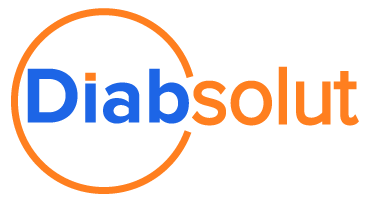Understanding Personas to Improve Your Implementation of Software Solutions
Author: Peter McMullan

Implementing or upgrading software solutions is a critical step for businesses aiming to optimize operations and improve efficiency. However, this process can feel overwhelming, especially when it comes to addressing diverse pain points, defining future needs, and ensuring employee adoption. That’s where understanding personas becomes invaluable. Personas—representations of the roles within your company—provide a clear framework to guide the implementation process. Let’s explore what personas are, how they simplify software transitions, and what different roles in field service management care about in a software solution.
What Are Personas?
Personas are role-based representations of the people in your organization who perform specific tasks and interact with software systems. Instead of looking at your team as a single, homogenous group, personas allow you to focus on the unique needs and workflows of individual roles.
In the field service management industry, for example, personas might include:
- Customer Service Representatives who engage with customers and manage inquiries
- Field Service Managers who oversee technicians and service schedules
- Dispatchers responsible for coordinating daily operations
- Inventory & Parts Managers tracking equipment and supplies
- Field Technicians performing on-site tasks and reporting field data
By identifying these personas, you gain a structured understanding of who will interact with the software and what their priorities are.
How Do Personas Simplify Software Implementation?
Using personas transforms a potentially chaotic implementation process into a more organized and people-centered approach. Here’s how:
- Categorized Pain Points and Objectives: Personas help you map out issues, needs, and objectives for each role. This ensures that your solution prioritizes the real-world challenges your team faces.
- Improved Employee Engagement: Involving employees early in the process fosters a sense of ownership. When staff members see that their input shapes the new system, they are more likely to embrace change and overcome resistance to moving away from older methods.
- Clearer Planning and Refinement: Personas provide a baseline for defining your software requirements. With this foundation, you can refine your plans, continuously incorporating feedback to make the solution practical and effective for all users.
What Do Field Service Personas Care About in Software?
Each persona has distinct priorities when it comes to software functionality. Addressing these ensures your solution meets the needs of all stakeholders:
- Customer Service Representatives
They focus on delivering excellent customer experiences. Key features include SLA tracking, automated response tools, and text templates to streamline communication.
- Field Service Managers
Managers need tools to oversee technicians and crew operations. Features like license tracking, shift scheduling, and utilization metrics help them optimize team performance.
- Dispatchers
Scheduling is their main responsibility. Solutions that allow for easy visualization, manipulation, and automation of schedules are critical to improving their efficiency.
- Inventory & Parts Managers
These professionals benefit from systems that provide robust inventory tracking, help plan preventive maintenance, and monitor part usage to avoid delays or stockouts.
- Field Technicians
Technicians need tools that simplify data and time entry while ensuring robust functionality regardless of location. Mobility and ease of use are their top priorities.
Bringing It All Together
Understanding and leveraging personas is a game-changer in the software implementation process. By focusing on the specific needs of each role within your organization, you not only streamline the transition but also build a solution that your team will readily adopt and use effectively.
For more insights into how personas can enhance your software strategy, listen to Arc 8 of our Java with Sugar podcast. In these episodes, we delve deeper into real-world applications and success stories of persona-driven implementations. Don’t miss it!
Search
Trending Topics
- Modernizing Government Utility Operations with Salesforce Field Service
- PSA vs Project Management Tools: Understanding the Key Differences
- The Role of Technology in Running an Efficient Customer Success Organization
- Maximizing Efficiency with Certinia Services Estimator: Unifying Software and Services Estimates for Enterprises
- How AMS Transforms PSA Break-Fix Management for Faster Resolutions
- How to Build Enhancements in Certinia PSA Without Overburdening Your Team
- Optimizing Certinia PSA: Addressing Backlogs, Enhancements, and Common Challenges
- Why Regular Health Checks Are Critical for Long-Term Success in Field Service Technology
- Professional Services Challenges in Today’s Business Landscape
- How Managed Services Drive Success – The Diabsolut Advantage
